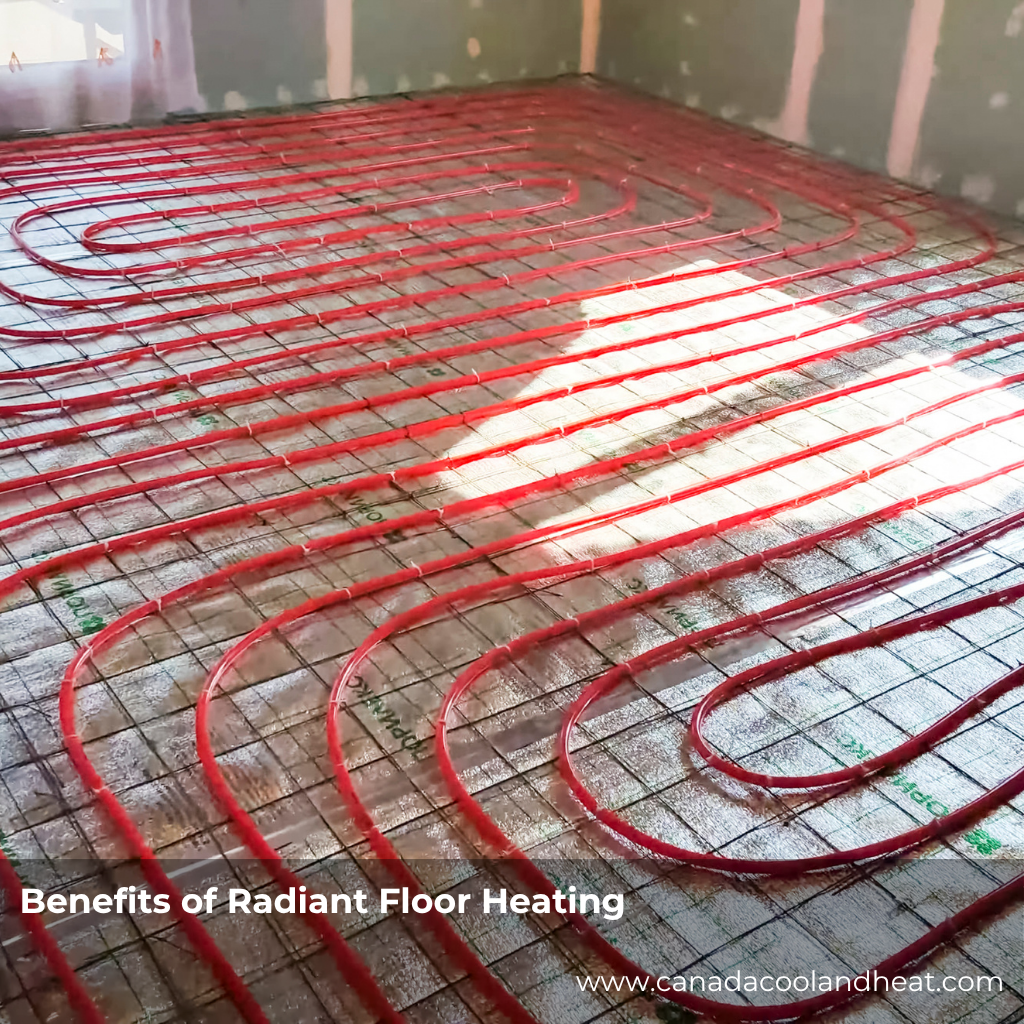A Tale of Two Systems: Warm Floors and Fresh Air
Imagine a family cooking Sunday breakfast — bacon sizzling, coffee brewing, pancakes flipping. The radiant floors gently warm the kitchen, making it a comfortable hub of activity. But as the delicious aromas fill the air, so does grease, steam, and heat.
That’s where the range hood comes in. Designed to pull odors, moisture, and airborne particles out of the kitchen, it’s essential to keeping your indoor air quality safe and pleasant.
However, every bit of air that your range hood removes has to be replaced somehow — and that’s where your HVAC system enters the picture.
How Vent Hoods Affect HVAC Balance
Your HVAC system maintains the balance between heating, cooling, and ventilation. But when a powerful vent hood pulls air out of your home, it can create negative pressure.
Here’s what that means in simple terms:
-
Your vent hood exhausts air outdoors.
-
The home becomes slightly “vacuumed” as a result.
-
Air from outside tries to find its way back in — through cracks, vents, or even the fireplace flue.
This imbalance can lead to:
-
Energy loss: Heated or cooled air escapes faster.
-
Backdrafting: Dangerous gases from appliances (like gas water heaters) can re-enter your home.
-
Uneven comfort: Drafty rooms or temperature fluctuations.
To avoid these problems, HVAC professionals design systems where make-up air replaces what the vent hood removes. This ensures that your kitchen remains well-ventilated and your home stays energy efficient.
Sizing Guidelines: Finding the Right Vent Hood
One of the most common questions homeowners ask is: “How big should my vent hood be?”
The answer depends on your cooking style, kitchen layout, and the power of your stove. But here are some general guidelines:
| Cooktop Type | Recommended Vent Hood CFM | Example |
|---|---|---|
| Electric Range | 300–450 CFM | Light cooking, minimal smoke |
| Gas Range | 450–900 CFM | Moderate cooking and frying |
| Professional Range | 900–1200+ CFM | Heavy cooking, frequent searing |
CFM (Cubic Feet per Minute) measures how much air the hood can move. The higher your BTU output on the stove, the more ventilation you’ll need.
Pro Tip:
For every 10,000 BTU of cooking power, plan for roughly 100 CFM of ventilation capacity.
And don’t forget — if your hood exceeds 400 CFM, many local building codes require a make-up air system to replace the exhausted air safely.
Integrating Vent Hoods with HVAC Systems
A well-designed kitchen ventilation system isn’t just about removing smoke. It’s about working in harmony with your HVAC setup.
Here’s how to achieve that balance:
-
Coordinate Early: Plan ventilation and HVAC systems together during renovation or new construction.
-
Use a Make-Up Air Unit: These systems bring in fresh air, sometimes pre-heated or cooled, to replace what’s lost.
-
Seal Ducts Properly: Leaky ducts waste energy and reduce airflow efficiency.
-
Smart Controls: Some advanced systems automatically adjust HVAC performance when the range hood operates.
By aligning these systems, you create a home that breathes easily — keeping comfort steady from your warm floors to your fresh kitchen air.
Energy Efficiency and Comfort: The Hidden Connection
Ventilation isn’t just about removing smoke; it’s about protecting your investment in comfort. When your HVAC system and range hood are properly balanced:
-
You maintain consistent indoor temperatures.
-
Your air quality improves, reducing allergens and moisture.
-
Your heating system works less, saving energy.
And in homes with radiant floor heating, this balance is even more critical. Since radiant systems don’t rely on blowing air, the HVAC and ventilation components play an even greater role in managing humidity and air circulation.
Conclusion: A Breath of Fresh Air
Whether you’re building a dream kitchen or upgrading an existing one, don’t overlook the quiet partnership between your vent hood and HVAC system. Together, they determine how fresh your air feels, how efficiently your home runs, and how comfortable your living space truly is.
The next time you step into that perfectly warm kitchen and breathe in the aroma of fresh cooking, remember — that comfort didn’t happen by accident. It’s the result of careful design, proper sizing, and smart ventilation choices.
FAQs: Vent Hood HVAC Kitchens
1. Why is make-up air important for kitchen ventilation?
Make-up air replaces the air your vent hood removes, preventing negative pressure and maintaining indoor comfort.
2. Can a range hood affect my heating system?
Yes. If the vent hood exhausts too much air, it can disrupt HVAC balance and cause temperature fluctuations.
3. What size vent hood do I need for a gas stove?
Typically, 450–900 CFM depending on your cooktop’s BTU rating and cooking frequency.
4. How often should I clean my vent hood filters?
For home use, clean or replace filters every 1–3 months to maintain efficiency and air quality.
5. Do radiant floor heating systems need extra ventilation?
Not directly, but because they don’t circulate air, proper kitchen ventilation becomes even more important for air freshness.
6. Are there energy-efficient vent hood options?
Yes — look for variable-speed motors and smart sensors that adjust airflow based on cooking activity.
7. Can poor kitchen ventilation impact indoor air quality?
Absolutely. Smoke, grease, and moisture can accumulate without a proper vent hood, leading to poor air quality and potential mold growth.
8. Should I consult an HVAC professional before installing a new vent hood?
Always. A professional can ensure your system meets code and works efficiently with your home’s HVAC setup.







